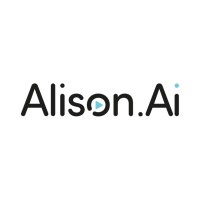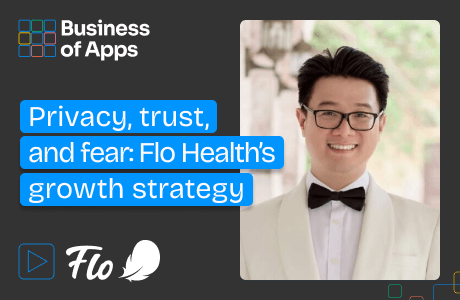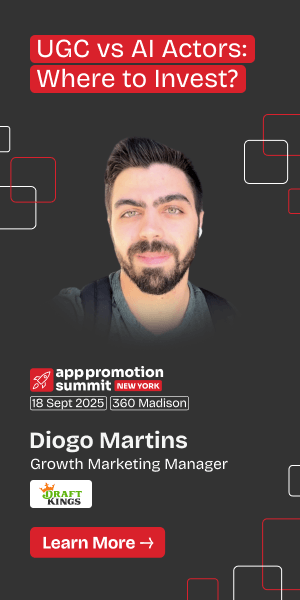In the brutal economics of app marketing, where user acquisition costs devour budgets and creative performance can make or break campaigns, one company has quietly built something extraordinary: an AI system that doesn’t just analyze what works, but explains why it works.
In this episode of App Talk, we came face to face with Asaf Yanai, co-founder and CEO of Alison.ai, who’s been pioneering AI-driven creative intelligence since 2020 — back when everyone still called it “machine learning” and the technology felt more like voodoo than science.
What started as a quest to understand the hidden drivers of creative performance has evolved into something unprecedented: a platform with 12.5 billion data points that can predict, optimize, and produce winning creatives at scale. The results speak for themselves: 50% reduction in marketing costs while delivering 200-300% revenue increases.
But perhaps more importantly, Yanai’s work reveals something fundamental about the future of app marketing — the age of creative guesswork is ending.
The taxonomy that changes everything
While most creative analysis stops at surface-level metrics — colors, logos, call-to-actions — Alison.ai built something far more sophisticated. Their AI doesn’t just identify what’s in a creative; it understands the intricate relationships between elements, platforms, audiences, and performance outcomes.
“It’s not just features,” Yanai explains. “It’s features plus platform plus audience plus type of devices plus type of promotions. You can’t just look at features as a singular source of truth.”
This holistic approach has uncovered insights that would be impossible to discover through traditional testing:
- Platform-specific penalties: Facebook prioritizes creatives with logos in the top-left corner, while TikTok actually penalizes logos entirely for the same app categories;
- Combination effects: The same creative elements perform differently when combined in different sequences or contexts;
- Audience interactions: Features that drive performance for one demographic can actively hurt conversion for another.
The implications are staggering. Every creative decision — from logo placement to color schemes — carries platform-specific weight that most marketers never consider.
How AI breaks app marketing rules
CTV Growth Guide: A must-read for performance marketers
Whether you’re looking to boost brand awareness or drive user acquisition, this guide has you covered. Learn how to leverage CTV for both brand awareness and performance-driven campaigns and get actionable insights to optimize your strategies.
Download nowSource: App Promotion Summit
The recipe revolution
Perhaps the most powerful metaphor to emerge from Yanai’s work is treating successful creatives like recipes. Just as a winning dish requires specific ingredients in precise proportions and order, high-performing creatives follow discoverable patterns.
“Some of our customers refer to it as a recipe — a winning recipe for a winning video,” Yanai notes. “The first scene has ten different ingredients in a specific order. The core scene has another ten or twenty features in a specific order. The end card has the same or different features.”
This recipe approach transforms creative development from art to science:
- Systematic optimization: Instead of random testing, teams can methodically adjust specific “ingredients”;
- Scalable success: Winning patterns can be adapted across different campaigns and verticals;
- Predictable outcomes: Performance becomes less about luck and more about following proven formulas.
The shift from intuition-based to data-driven creative development represents a fundamental evolution in how app companies approach user acquisition.
When AI builds better creatives than humans
The most counterintuitive breakthrough in Yanai’s approach isn’t just analyzing creatives, it’s producing them. Alison.ai’s proprietary system converts performance insights directly into code, bypassing the traditional prompt-engineering bottleneck entirely.
“When we take raw insights and transform them into prompts, we’re losing context and relevancy,” Yanai explains. “But if we transform raw data points directly to code without translating to text, we’re not missing anything.”
The results are dramatic: 50-200 times more accurate than traditional prompt-based generation, with output that consistently aligns with brand guidelines while optimizing for performance.
This represents a paradigm shift in creative production:
- Eliminating human error: No lost insights in translation from analysis to execution;
- Maintaining brand consistency: AI-generated content stays on-brand while optimizing for conversion;
- Scaling impossible speed: From insight to finished creative in a fraction of traditional timelines.
The workflow revolution nobody saw coming
While the industry obsesses over individual AI tools, Yanai built something more strategic: an end-to-end creative workflow that serves every stakeholder in the marketing organization.
“Creative teams speak art. Performance teams speak performance. These are completely different languages,” he observes. “We transformed everything into data points so everyone can look at the same information.”
This workflow integration solves the perpetual problem of marketing team silos:
- Brand teams get visibility into what drives brand lift;
- User acquisition teams see performance metrics and optimization opportunities;
- Creative teams understand why their work performs (or doesn’t);
- Data teams can analyze creative impact across the entire funnel.
The result is what Yanai calls “no room for error” — when the same AI handles analysis, insights, and production, human interpretation mistakes disappear.
What this means for apps
The insights from Yanai’s work translate into several strategic imperatives for app companies:
Stop treating creatives as a black box
The days of “we’ll know it when we see it” are over. Creative performance follows discoverable patterns that can be systematically optimized.
Platform specificity matters more than brand consistency
Your Facebook creative strategy should be fundamentally different from your TikTok approach, even for identical campaigns.
Invest in creative intelligence, not just creative volume
Producing thousands of variations without understanding what drives performance is expensive guesswork.
Bridge the art-science divide
The future belongs to teams that can speak both creative and data languages fluently.
Embrace AI as a creative co-pilot
The companies winning in creative performance aren’t replacing humans with AI — they’re augmenting human creativity with AI intelligence.
In an app ecosystem where creative performance directly impacts bottom-line survival, understanding what actually drives results becomes business-critical. The difference between understanding and guessing creative performance is the difference between sustainable growth and unsustainable acquisition costs.
As Yanai puts it: “We’re reinventing how companies handle AI and embrace AI, because they can see the impact. The CFO sees the impact. The CMO sees the impact. The CEO sees the impact.”
Recorded at App Promotion Summit London 2025, this interview is part of our ongoing App Talk series, where we dive deep into the strategies behind today’s most successful apps. Explore all our App Talk interviews here.











